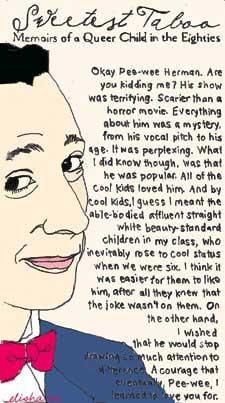In each issue of Capital Xtra, a prominent literary Canadian recommends a queer-authored book. In this installment, short-fiction writer Bill Brown recommends Alberto Manguel’s Reading Pictures: What We Think About When We Look at Art (Vintage Canada).
***
Let’s, for a moment, go with a stereotype: queers are synonymous with art. Now imagine yourself a newbie queer without a clue. The pictures you view still demand something. Sculptures stand devoid of meaning without insight into their visual language. Ditto for photos, mixed media, installations, architecture. And reading most exhibition catalogues only confirms your ignorance.
Cue up one of our own — Alberto Manguel. His book Reading Pictures is not only the ultimate self-help book for reading visual language, its deeply satisfying prose is both accessible and arresting. Without either talking down to us or downplaying the breadth of his knowledge, Manguel shows there’s a way into any picture. A well-rounded education might enrich your “reading,” sure. But, he says, you can also use what’s at hand to invent one.
This book’s topics include Brazil’s 18th-century sculptor Aleijadinho, Ledoux’s pre-French Revolution architecture and the more contemporary work of Alberta-born artist Marianna Gartner. In choosing artists who, to many, are unknowns, he builds his premise that, with reflection and analysis, any visual will open up and, in revealing itself, change your life.
One of the book’s 12 chapters, The Image as Understanding, examines Lavinia Fontana. Before reading this book, I’d not heard of her. She was a 16th-century painter, considered about as far from the mainstream at the time as one of her better-known subjects: Tognina Gonsalvus, a hairy-faced Dutch girl.
Using this image, entitled Portrait of a Girl Covered in Hair, Manguel explores a theme familiar to gays: transgression heaped on transgression — and the resultant bonds between those cast out of society. To analyze Fontana’s painting, Manguel draws on such diverse iconography as Greta Garbo, Samuel Johnson, Egyptian pharaohs and skinheads. And, paradoxically, this eclecticism keeps our attention — and his focus — tight.
For those unfamiliar with Manguel’s oeuvre, Reading Pictures will open up the rich literary vein of this man’s work: critiques, anthologies, essays, criticism and — inevitably — Manguel’s own stories. AS Byatt said of Manguel’s History of Reading: it’s “a brilliant account of the way in which reader and writer meet and change each other.” The same holds true of Reading Pictures. Manguel’s dreamlike writing guides us through the reading of images in a way that will change them and us forever.
But, if at the end of it you still draw a blank in front of, say, a Nozkowski abstract, consider a recent Globe and Mail article on this underappreciated American painter. In it, Sarah Milroy notes that to spend time with one of this man’s pictures is to “end up examining the archive of your own imagination.”
To that, Manguel says, Hear! Hear!
***
Bill Brown’s short stories have appeared in several anthologies. His collection When Jupiter’s Aligned with Mars was published in September 2009. Bill and his husband, John, live in Ottawa.

 Why you can trust Xtra
Why you can trust Xtra


